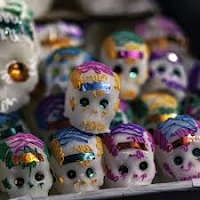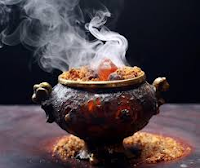TRADITIONS
The Tradition of Ofrendas in Mexico
The ofrendas (offerings) are a central part of the Día de Muertos (Day of the Dead) traditions in Mexico. This celebration, held on November 1st and 2nd, honors deceased loved ones. The tradition of setting up ofrendas has pre-Hispanic roots but also incorporates Catholic elements that came with the Spanish colonization.Traditional Elements of the Ofrenda
Ofrendas usually have multiple levels, symbolizing different aspects of the worlds of the living and the dead. The most common elements include:1. Photographs: Images of the deceased are placed to honor them.
2. Candles: Represent the light that guides the souls on their journey back to the world of the living.
3. Cempasúchil (Marigold flowers): These bright orange or yellow flowers are symbols of life and death. Their petals are used to guide the souls with their vibrant color and scent.
4. Sugar skulls: Playfully represent death, reminding us that it’s part of life.
5. Pan de muerto (Bread of the Dead): A sweet bread made specifically for this time, symbolizing the cycle of life and death.
6. Favorite food and drink: Dishes and beverages that the deceased enjoyed in life, such as tamales, mole, tequila, pulque, or atole, are placed on the altar.
7. Incense (copal): The smoke is used to cleanse the space of evil spirits and to guide the souls of the deceased.
8. Papel picado (cut paper decorations): These colorful paper banners represent the wind and the union between life and death.
9. Salt: Used to purify the soul and protect the spirits on their journey.
10. Water: Placed to quench the thirst of the spirits after their long journey.














Comentarios
Publicar un comentario